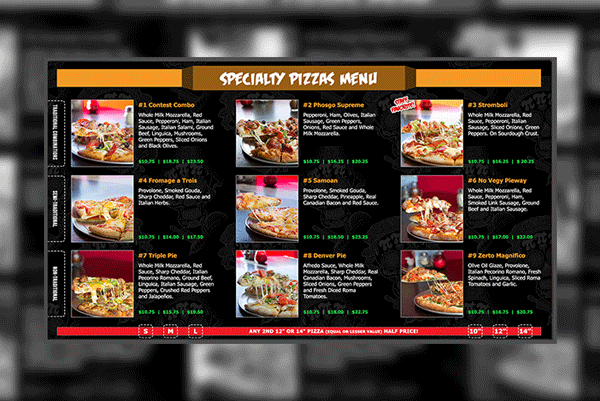
Source by Google
In today's digital age, technology is continuously shaping the way businesses operate, and the restaurant industry is no exception. One key innovation that has been making waves in the dining scene is the use of restaurant menu display screens. These digital screens are replacing traditional printed menus and offering a more interactive and engaging experience for customers. But what impact do these high-tech menu displays have on customer satisfaction? Let's delve into this question and explore the implications of tech meeting taste in the restaurant world.
The Rise of Restaurant Menu Display Screens
Restaurant menu display screens, also known as digital menu boards, are electronic screens used to showcase menu items, prices, and promotions in a visually appealing way. These screens can be found in various forms, including wall-mounted displays, tableside tablets, and self-service kiosks. The adoption of digital menu boards in restaurants has been steadily increasing due to several factors:
- Enhanced visual appeal: Digital menu screens allow for dynamic content, vibrant images, and videos that capture customers' attention more effectively than static printed menus.
- Flexibility and real-time updates: Restaurant owners can easily update menu items, prices, and promotions on digital screens, ensuring that customers always have access to the most current information.
- Upselling opportunities: Digital menu boards can strategically highlight high-margin items, promote add-ons, and suggest complementary dishes, leading to increased sales and revenue.
Personalized and Interactive Dining Experience
One of the key benefits of restaurant menu display screens is the ability to provide a personalized and interactive dining experience for customers. These digital screens can be programmed to showcase tailored recommendations based on customer preferences, order history, and even the time of day. This level of customization not only helps customers discover new dishes but also enhances their overall dining experience.
- Customized recommendations: By analyzing customer data and behavior, digital menu boards can suggest menu items that align with individual tastes and preferences, leading to a more personalized dining experience.
- Interactive features: Some restaurant menu display screens allow customers to browse through menu items, view nutritional information, and place orders directly from the table, empowering diners to make informed choices and interact with the menu in a fun and engaging way.
- Feedback collection: Digital menu boards can also serve as a platform for collecting customer feedback and ratings, enabling restaurants to gather valuable insights and improve their offerings based on real-time input.
Impact on Customer Satisfaction
Now, let's explore the impact of restaurant menu display screens on customer satisfaction and how these high-tech innovations can influence diners' overall perception of the dining experience:
Improved Ordering Process and Accuracy
One of the most significant advantages of digital menu boards is the streamlined ordering process they offer. By enabling customers to browse menu items, customize their orders, and make payments directly through the screen, these devices can enhance efficiency, reduce wait times, and minimize order errors.
- Self-service convenience: Restaurant menu display screens empower customers to take control of their dining experience by enabling self-service ordering, which can lead to faster service and increased customer satisfaction.
- Order accuracy: With digital menus, customers can view detailed descriptions and images of menu items, reducing the chances of miscommunication and ensuring that orders are placed accurately.
- Special dietary requirements: Digital menu boards can accommodate special dietary needs by allowing customers to filter menu options based on allergies, preferences, or dietary restrictions, catering to a wider range of diners.
Enhanced Engagement and Brand Loyalty
By leveraging the interactive capabilities of restaurant menu display screens, establishments can create a more engaging and immersive dining experience that resonates with customers and fosters brand loyalty.
- Branding and storytelling: Digital menu boards provide an opportunity for restaurants to showcase their brand story, highlight sourcing practices, and promote sustainability initiatives, allowing customers to connect with the brand on a deeper level.
- Promotional opportunities: Restaurants can use digital screens to promote limited-time offers, seasonal specials, and loyalty programs, incentivizing repeat visits and encouraging customer loyalty.
- Social media integration: Some restaurant menu display screens feature social media integration, enabling customers to share their dining experience online, generate user-generated content, and expand the restaurant's online presence through word-of-mouth marketing.
Conclusion
Restaurant menu display screens have revolutionized the way customers interact with menus and order food in restaurants. By offering a personalized, interactive, and visually appealing dining experience, these high-tech innovations have the potential to significantly impact customer satisfaction levels and drive business success. As technology continues to shape the restaurant industry, embracing digital menu boards can help establishments stay ahead of the curve, meet customer expectations, and deliver exceptional dining experiences that keep patrons coming back for more.